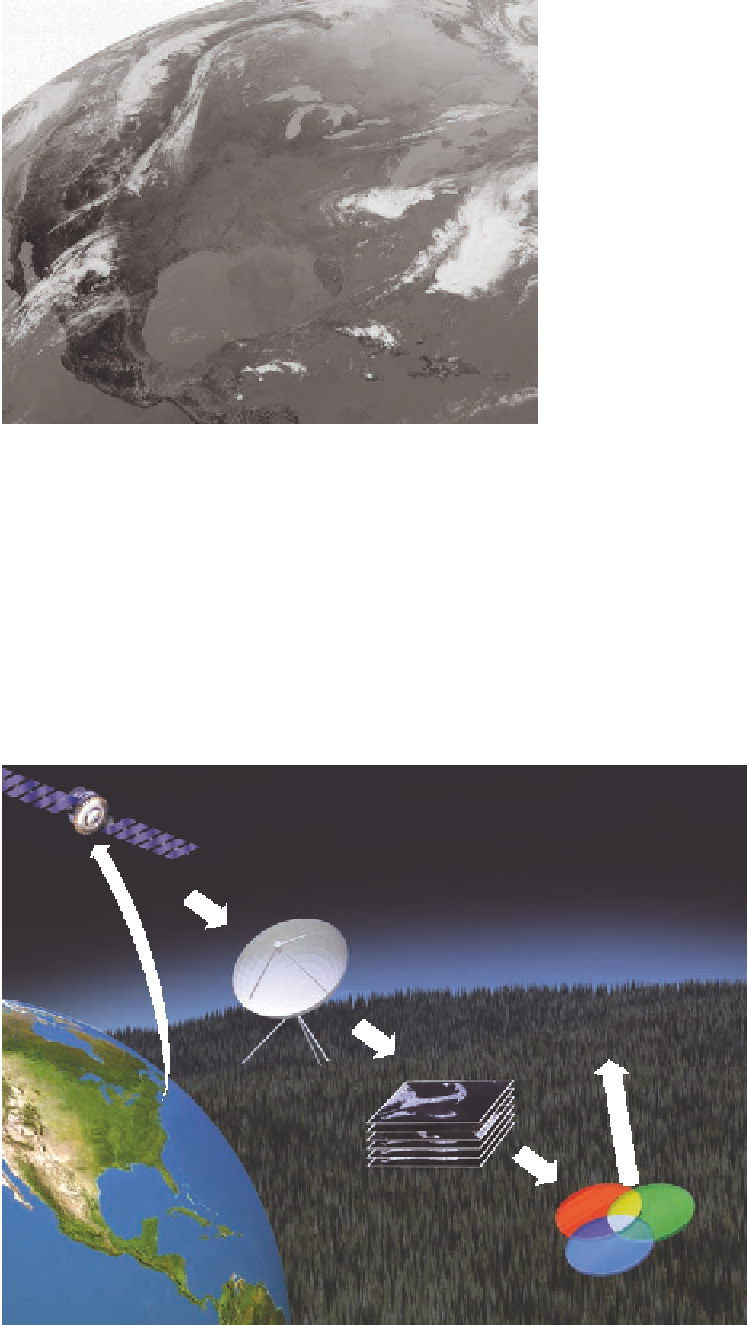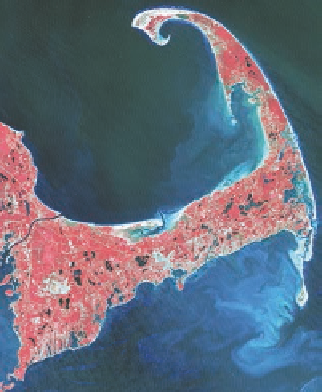Geoscience Reference
In-Depth Information
above the Equator at 135° W longitude and views the western
portion of North America and South America, as well as the vast
majority of the Pacific Ocean. As with other forms of satellite
remote sensing, the GOES-10 and GOES-12 images slightly
overlap one another.
Remote sensing operates on the simple principle that ob-
jects on Earth emit electromagnetic energy that can be mea-
sured. Although the electromagnetic spectrum will be discussed
in much greater detail in Chapter 4, it is sufficient for now to
say that objects on Earth emit energy that is both visible and
invisible to our unaided eyes. This energy can be measured by
either satellites or airplane platforms and then stored digitally
in a computer for detailed analysis.
Figure 2.24 shows the typical steps through which satellite
imagery is processed, with this example focusing on a false-
color image of Cape Cod in Massachusetts. The sequence be-
gins with a measurement of
emissivity
by the satellite. These
data are then sent to a receiving station on Earth, such as at
NASA, where they are archived until distributed to the ap-
propriate users in the scientific community as black-and-white
images. The image is then modified by the users through the
application of colorizing filters to produce a false-color image
that highlights particular geographic features of interest.
Figure 2.23 A typical GOES image.
This example is from the
GOES East satellite, which provides daily imagery of the eastern
United States. Clouds are bright white, whereas darker areas are
zones of clear sky. This image shows that clear skies dominated
the eastern part of the country on this particular day.
Satellite
Receiving station
on Earth
Radiation
measurement
(emissivity)
Target area
Archive of black
and white images
Figure 2.24 Processing of remotely
sensed images.
This sequence of events
produces a false-color image of Cape Cod,
Massachusetts, that can be geographically
analyzed.
Color filters
Emissivity
The amount of electromagnetic energy released by
some aspect of the Earth's surface.











